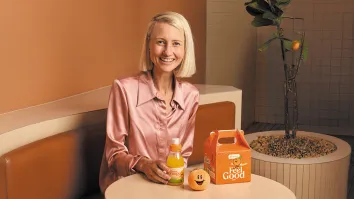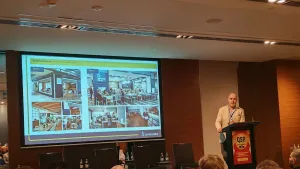How CFOs can effectively use data analytics to improve processes
By Donal Graham Many leading fast food companies are using analytics about customers and pricing to help gain a competitive advantage in the marketplace. When armed with the capabilities and technologies to transform huge amounts of transactional data into actionable insights, a company’s leadership can be confident in decision making to help improve not just the efficiency of day-to-day operations but also the effectiveness of strategic planning.
The ‘hats’ a CFO wears
The CFO can be the catalyst that typically brings together managers, the chief information officer and the Information Technology (IT) organisation, and the functional executives accountable for performance in sales, marketing, and operations to ensure the organisation is using and applying analytical data.
Second, as a strategist, the CFO focuses on enhancing shareholder value. The use of innovative analytics is fast becoming one of the critical tools to help achieve this result.
The CFO should know:
• Do we have the capabilities to deliver analysis-driven improvements?
• What data should be captured?
• Which analytical tools make sense for our business?
• Do we have the required people and organisation in place?
• How big is the gap between what we need and what we have?
The modern CFO wears many hats in the typical fast food company:
• As a steward, finance oversees the accounting, control, and asset preservation tasks which can be necessary for compliance with external financial reporting requirements.
• As an operator, finance seeks to balance cost and service levels in doing its job.
• As a catalyst, finance can be an agent for change and business alignment, using its central position to help identify, evaluate, and execute strategies and act as a business collaborator with other decision makers (including business unit leaders, the chief information officer, and sales and marketing executives).
• As a strategist, finance helps define the future of the company and focuses on enhancing shareholder value through a focus on profitable revenue growth, helping to manage operating margins and monitor business risks.
Business analytics
Typically, the top two objectives of finance in fast food companies are 1) improving/maintaining margins and 2) growing and preserving revenue. Business analytics can be fundamental to these mandates. The CFO is typically the natural leader in the quest to use analytics to help drive bottom-line growth. With an eye toward profitability and the external market, with a cross-functional view of the business, with sensitivity to risk management, and with an appreciation of the value of fact-based decision making, the CFO can be the most effective choice to help leverage technology and analysts in the pursuit of higher margins and greater revenue.
The intense competition for high-value customers can underline the importance of using analytic tools to get close—and stay close—to the high-value customers. Also, advanced analytics can identify the dollars potentially being left on the table because of less-than-favourable pricing or special sales initiatives. In fact, research has shown that a company can gain an average margin uplift of one to three per cent by implementing a pricing improvement initiative—a crucial differentiator and competitive edge during times of saturated markets, unfavourable macro-economic conditions, and shrinking margins.
Segmentation as the basis for customer profitability
Improved ‘profitability per customer’ should begin with a customer segmentation analysis, which can provide insights into customer preferences and subsequent purchasing behaviour which drive overall sales, product mix, and margin contribution.
Customers can be segmented in different clusters to create multi-dimensional views based on categories such as historic and predicted performance, strategic fit, buying behaviours, and cost-to-serve. With an improved understanding of customer categories and the ‘why’ of their buying patterns, the sales and finance functions can work together to manage customer, marketing, pricing and operational strategies more effectively.
Implementing analytics should not be a ‘big bang’ initiative; capabilities that can meet the company’s needs should be developed over time. A crawl-walk-run approach can allow the CFO to focus on one step at a time.
First, ask questions: before taking any action, CFOs should ask, ‘What capabilities are required to deliver these analytic-driven improvements?’ Data quality plays a crucial role, and the CFO should confirm that the organisation’s technology can provide the ability to pull and integrate data from multiple, disparate systems. In other words, the data sets should have the required integrity.
The next question is ‘Are we capturing and analysing the proper data, the proper way?’ The analytical process should be appropriate and defined. One way to determine whether this is the case is by using multiple analytic tools to triangulate to an answer when addressing an issue.
Next, determine customers’ needs. By working collaboratively with marketing and sales to determine customers’ needs, the CFO can gain insights about the nature of the business and demands of the marketplace. Then, in defining customer segments, the cross-functional team(s) can align each segment’s features with the company’s strategic goals. The CFO’s subsequent go-to-market recommendations for profitable revenue growth should reflect the segment performance analysis. The CFO should use business analytics to quantify the potential impact on revenue and profitability of each go-to-market initiative, as well as to determine the feasibility of each in terms of ease and pace of implementation. The CFO should prioritise the initiatives by value, focusing on the realisation of tangible benefits early on as the most effective way to get buy-in to the use of business analytics from finance’s business colleagues. Prioritisation can include the design of an implementation roadmap that would specify “owners” and their responsibilities.

























